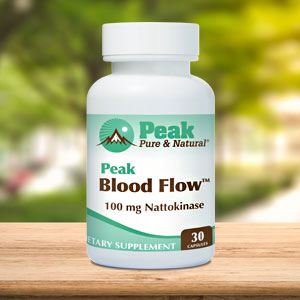Get Easy Health Digest™ in your inbox and don’t miss a thing when you subscribe today. Plus, get the free bonus report, Mother Nature’s Tips, Tricks and Remedies for Cholesterol, Blood Pressure & Blood Sugar as my way of saying welcome to the community!
How COVID-19 tricks arteries into producing blood clots

COVID-19’s affinity for blood clots has perplexed doctors and scientists almost since day one.
Because blood clots can contribute to worse outcomes for those infected, researchers have focused on finding their cause. Some have speculated that the virus infects the blood vessels themselves.
A study out of the University of Queensland has now laid that theory to rest — and provided a better understanding of why they occur and the possibility of treatments that can reduce their threat.
An overblown inflammatory response
According to the researchers, their findings show that the SARS-CoV-2 virus does not infect blood vessels, despite the high risk of blood clots in COVID-19 patients.
They discovered that rather than the virus infecting the cells that line blood vessels — known as the endothelium — the body’s overblown inflammatory response looked to be the cause.
“When our immune system works well, it clears the virus from our bodies,” said Dr. Larisa Labzin from UQ’s Institute for Molecular Bioscience. “But sometimes it goes into overdrive and we get an overblown inflammatory response causing complications –in the case of COVID-19, this is often blood clots when there shouldn’t be any.”
What happens is this….
The endothelial cells that line our blood vessels and under normal conditions support the healthy functions of the vessels, including blood flow, sense the COVID infection in the blood and launch an attack, similar to what they may do when there is an injury inside a blood vessel.
When a blood vessel is injured, a delicate balance occurs between enzymes that clot blood (fibrin) to heal the injury and those that then dissolve the clot (plasmin) once the injury is healed, allowing normal blood flow to continue.
But in the case of COVID, it appears the endothelial cells launch an overblown pro-inflammatory response. Instead of fighting just enough to win, your body throws everything it has into the battle, skyrocketing inflammation and triggering the production of potentially deadly clots.
That makes it easy to see why at least 40 percent of patients that are hospitalized with COVID-19 are at high risk of blood clots.
But luckily, it also helps us since as the researchers point out, “Knowing that it is inflammation causing these cardiovascular complications arising from COVID-19 rather than the virus itself will help us develop the right treatments.”
Keeping inflammation in check for a balanced immune response
Inflammation has been considered a strong contributor to disease, long before COVID-19 was around. Chronic inflammation breaks your body’s internal balance point, disrupting its ability to regulate the immune system.
A balanced immune response is key no matter what illness you might face. And though you may not have as much control over inflammation in the throes of infection, it’s reasonable to consider that living a lifestyle that keeps inflammation in check may help keep levels from becoming overblown when you need them to keep your immune response balanced.
This research also shows the importance of supporting the health of your arteries. Diet can help, of course, but there’s a specific form of vitamin K2, called MK-7, that plays a very important role in the regulation of endothelial function. A fermented Japanese food — natto — is the highest food source of this vitamin. Other good food sources include hard cheeses, liver and other organ meats.
A few ways to lower inflammation in the body include;
#1 – Increasing Omega-3 levels
Omega-3s essential fatty acids help combat inflammation. Research into their connection with COVID-19 found that lower blood levels of omega-3s were linked to a higher death risk from the virus.
#2 – Exercising
Exercise has been shown to dramatically reduce the effects of pro-inflammatory molecules, so be sure to get some in every day.
#3 – Eating to beat disease
It also helps to add inflammation-fighting foods such as onions, turmeric, red grapes and acai berries to your daily diet. You can also read about the foods that decreased frontline workers’ COVID risks by 73 percent.
Finally, be sure to be aware of the signs you may have a clot if you’ve been diagnosed with COVID since being vigilant about symptoms could save your life.
Editor’s note: Have you heard of EDTA chelation therapy? It was developed originally to remove lead and other contaminants, including heavy metals, from the body. Its uses now run the gamut from varicose veins to circulation. Click here to discover Chelation: Natural Miracle for Protecting Your Heart and Enhancing Your Health!
Sources:
Vascular disease in COVID-19 is not caused by viral infection of blood vessels – EurekAlert!
Endothelial cells are not productively infected by SARS-CoV-2 – Clinical and Translational Immunology













